Gulf of Kachchh field trips: Birds, mangroves, corals, macrotides, industries
Bill Dennison ·We had two field trips to the Gulf of Kachchh. One trip was to the Khijadiya Bird Sanctuary near Jamnagar. We visited in the late afternoon and were treated to a nice breeze and a beautiful sunset over the water. The sanctuary used a levee with spillways to impound freshwater to maintain high quality bird habitat during the dry season. There were two parts to the park, with the western portion (Part 1) having essentially fully freshwater and the eastern portion (Part 2) having brackish water, with full strength seawater just outside the sanctuary in the Gulf of Kachchh. This diversity of freshwater, brackish water and full seawater with various islands and vegetation makes for excellent and diverse bird habitat.

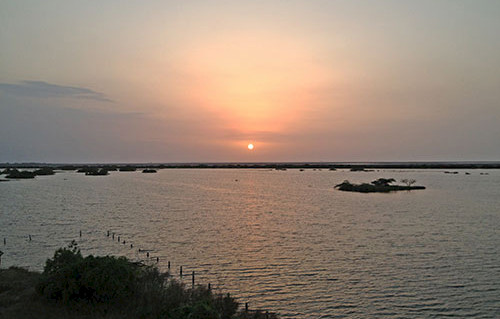
This region serves as a hub for the Central Asia migratory bird flyway, but we were ‘off-season’. The sanctuary had a series of observation towers on the levee which afforded great views of both the tidal flats of the Gulf and of the fresh and brackish waters of the sanctuary. We saw pink flamingos, night herons, kingfishers, weaver birds, thick-knees, ducks, ibis, and kites. We could see three types of mangroves, Avicennia (the dominant species), Rhizophora and Ceriops. From the observation towers we could see the corn and cotton fields and a salt drying factory for the evaporative salt industry that occurs on the extensive tidal flats of the Gulf of Kachchh.

The second field trip to the Gulf of Kachchh National Marine Park was conducted at sunrise in order to catch the low tide. The intertidal is extensive due to the wide tidal range (3-4+m) and we walked a considerable distance to the edge of the tidal flat. We saw the mangrove restoration seedlings that had been planted the previous year. We also saw the coral restoration ‘nursery’ with the small coral pieces that were going to be used to reestablish corals that were destroyed during the historical coral mining used for the cement industry (before the establishment of the marine park). These restoration activities were very impressive in their intent, scope and results. We also saw lots of organisms in the various shallow tide pools, including octopus, sea stars, brittle stars, holothurians, pufferfish, seagrasses, seaweeds, live coral, sponges, sea hares, anemones and oysters.
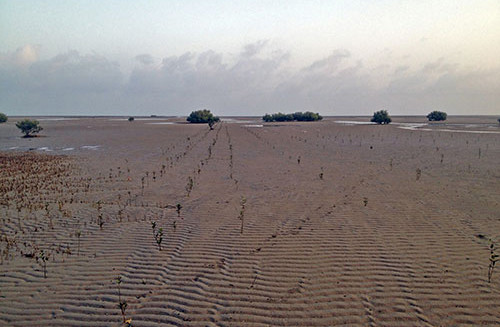
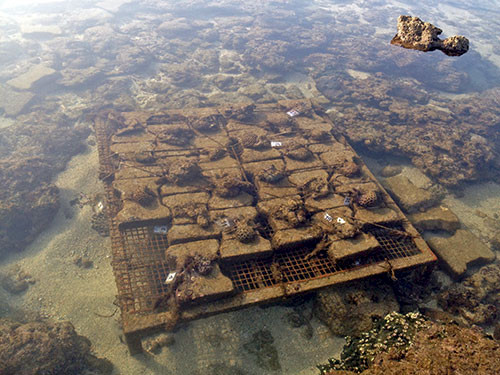
One of the most impressive things that the rangers showed us when they placed a piece of coral placed into the mouth of an agitated pufferfish which was inflated with air. The pufferfish quickly and audibly chomped the coral piece in half. One of the surprises was the fishing activity within the park, as we saw fishing nets and people collecting crabs on the tide flats and fishing boats offshore. But there are many regions within other marine parks in which fishing is permitted (including the Great Barrier Reef Marine Park), so it is not unusual. I was able to snorkel in the shallow, turbid water of the Gulf of Kachchh. The nearshore bottom was covered with coral and coral rubble. A curious observation was the dead fragments of Acropora corals that we saw, however the rangers assured us that no live Acropora occurs in this region. I wonder what event wiped out the Acropora and why this relatively ‘weedy’ coral has not reestablished.
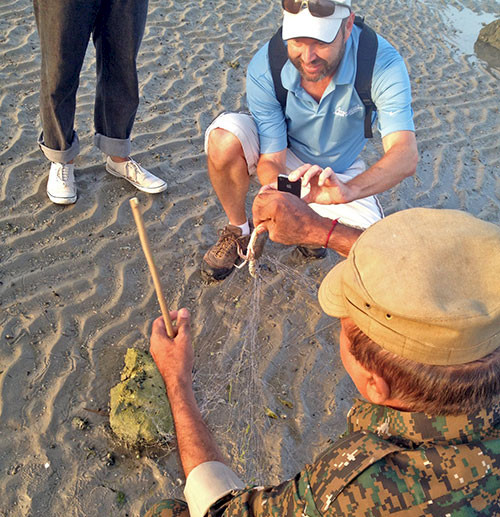
Both of these tours were guided by very knowledgeable and enthusiastic rangers. They were anxious to show us the features of the bird sanctuary and marine park. We had excellent conditions to visit the sanctuary and park (mild weather at sunset and sunrise, respectfully). In traveling to the sanctuary and park and visible on the horizon were some of the various environmental threats as well. We could see some of the evaporative salt ponds, the salt drying factory, large tankers, the refineries, fertilizer plant, agricultural fields and coastal communities. Because of these threats, I was glad that we had met the committed people of Gujarat who are concerned about the ecosystems of the Gulf of Kachchh. As always, it is so much more meaningful to be developing report cards and assessments about places that we have personally visited and seen with our own eyes.
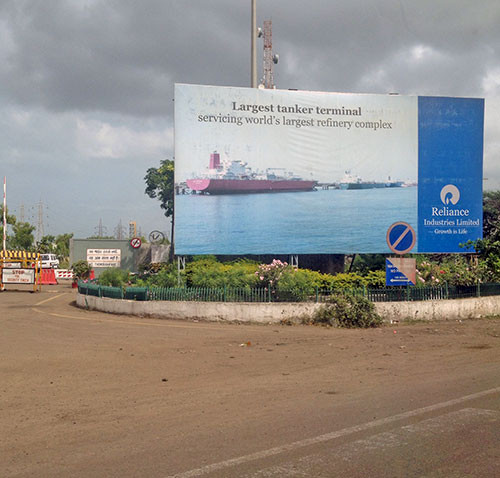
About the author
Bill Dennison

Dr. Bill Dennison is a Professor of Marine Science and Vice President for Science Application at the University of Maryland Center for Environmental Science.